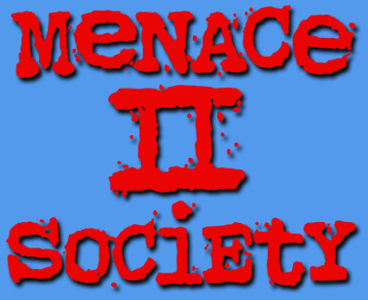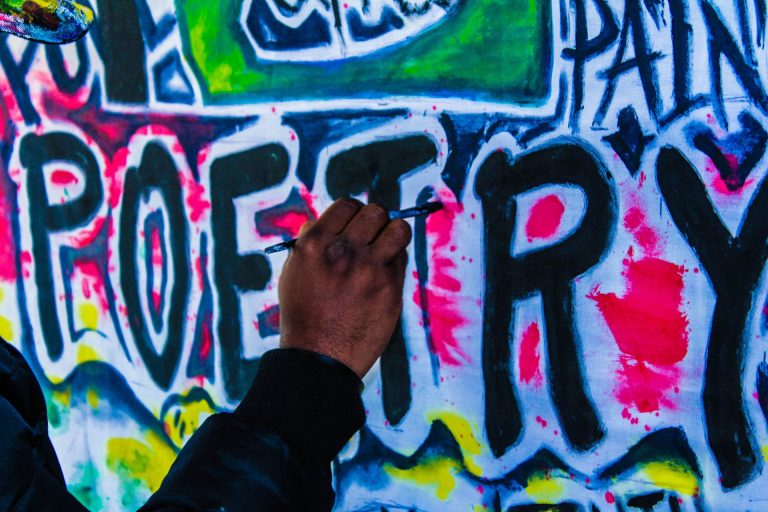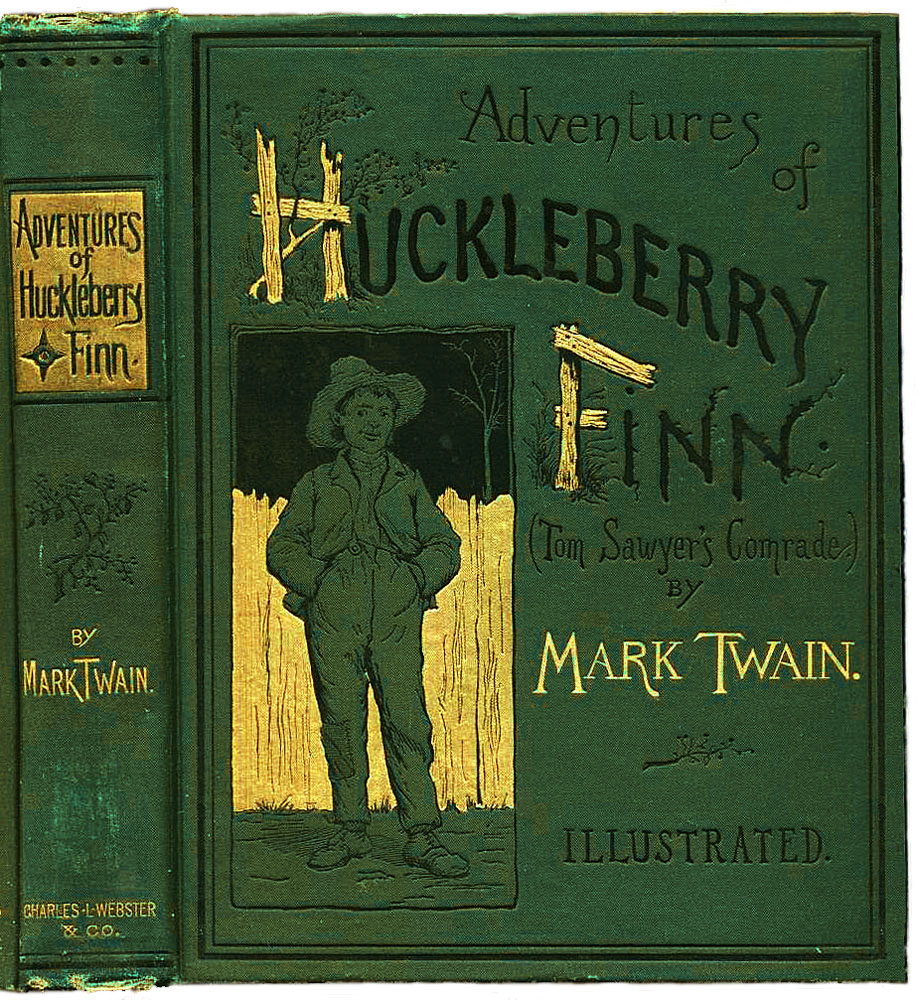This is a film criticism essay that is about a 1990s urban Los Angeles drama called “Menace II Society” that was directed by Albert and Allen Hughes. A link to the film on the open source website archive.org is here.
The Inevitability of Caine’s Death in “Menace II Society”
An Academic Essay by Michael Hoeft
Protagonist Caine’s first voice-over words in the Hughes Brothers’ urban crime drama Menace II Society are: “Went to the store just to get a beer, came out an accessory to murder and armed robbery. It’s funny like that in the hood sometimes. You never knew what was gonna happen or when.” Common filmic convention is that a voice-over evidences the said character surviving throughout the diegesis of the film since he/she is looking back on this period and commenting on it through the voice-over; however, this convention is flipped in the film. While Caine’s voice-over throughout Menace II Society may make the audience believe that his character survived to be able to look back on his brutal and stark childhood, there are nevertheless myriad pieces of evidence in the mise-en-scene and story structure that suggest that his character is heading towards the inevitable: an early death. For the purposes of this essay, we will refer to mise-en-scene as whatever is contained within the screen’s frame and story structure as how the scenes are constructed in a parallel and/or logical fashion. This essay will be organized based on three groups of inter-related scenes (1,2, & 3 upcoming) and two structural techniques (4 & 5 upcoming) that will help illustrate the ineluctable and tragic outcome of Caine’s journey throughout the film: 1) Caine’s childhood scene (interior of his home) and the final scene, 2) the first scene whereby O. Dog kills the shop owners, the party scene, the post-party scene where Harold is killed and Caine is shot, the murderous scene where Harold’s murder is avenged, and the scene where Caine buys a stolen car and robs a random person in broad daylight 3) Caine’s childhood scene (exterior of his home) and the scene where Caine shows young Anthony his gun, 4) Caine’s three living situations throughout the film, and 5) Caine’s having multiple guns pointed at him throughout the film.
The first sequence of scenes that presages Caine’s unfortunate early death is his childhood scene (interior of his home) matched with the film’s final scene. In his childhood scene, the mise-en-scene displays an ocean of red in terms of the lighting all throughout Caine’s childhood home in urban Los Angeles which commences with his father’s character lighting a cigarette, creating a crimson stogie, fueling the rest of the red that permeates the interior of the home as the camera moves throughout the house. The symbolism of this red hue completely overwhelming Caine’s childhood home is clear; blood and death are everywhere and ever-present even when Caine is a young child, reflecting the filmmakers’ hopelessness with regards to the protagonist’s inability to have a bright future largely because of his early home environment. Additionally, the mise-en-scene displays immoral adults and their environment overwhelmingly intruding on the environment of innocence and childhood, with Caine’s mother’s character doing heroin in the family room before the scene is over. Perhaps the most powerful image of this scene is when his father’s character shoots and kills a recently-paroled felon, presumably the man who they were all throwing the party for because he owed Caine’s Dad money and he refused to pay him that night; Caine, all of 8-or-so-years-old, unfortunately witnesses this. Plainly, the audience sees that both of his parents are not embracing any semblance of maturity with regards to raising a young son and their influence and actions displayed in the mis-en-scene (ie Caine’s drug-addled mother and murderous father) convey their darkly immoral adult world corrupting the innocence of his world, a piece of textual evidence that predicts the violent end that will intrude upon Caine’s life by the end of the film. Lastly, the mis-en-scene evidence in Caine’s childhood scene that is perhaps most predictive of his fated early demise is the fact that he himself wears an all-red onesie, which symbolically presents his character as unable to escape from the clutches of an early death. This singular childhood early life scene in the film is book-ended with the final scene of the film where Caine again “wears a red onesie”, in essence, as he is violently murdered, shot numerous times in a drive-by, the mis-en-scene reflecting the vermilion blood splattered all over his body and face as he dies in his friend Stacy’s arms.
The next sequence of scenes that predicts Caine’s unfortunate early death is the first scene where O. Dog kills the shop owners, the party scene, the post-party scene where Harold is killed and Caine is shot, the murderous scene where Harold’s murder is avenged, and the scene where Caine robs a random person in broad daylight. In the mis-en-scene of the film’s first scene, O. Dog exercises total aggression and hyper-agency with regards to the murderous violence in the convenience store towards the shop owners; Caine is unhappy with O. Dog’s unspeakable crime and refuses to even jump over the counter to get the money from the till. Later, at the post-graduation house party that Caine attends with his cousin, Harold, both men are walking into the house when an off-screen car seemingly almost hits them. Harold raises his hands in an aggressive, challenging stance and they both could have been shot and killed here if the person or persons in the car were out-of-control enough and possessed loaded weapons. Later still, when Harold and Caine go get food (with O. Dog and some of Caine’s other friends in another car), they are met by multiple assailants with guns pointed at them who want to steal Harold’s car. While the mis-en-scene reflects Caine as ready to simply leave the car in order to preserve his life, Harold instead shows that he isn’t going to back down, flashing a gun from underneath his seat even though he presumably knows this is almost certainly a fateful decision. Harold is killed and Caine is shot and almost dies if it wasn’t for being saved by hospital staff, a true wake-up call if his character ever needed one. Caine, however, tempts fate more and more even as he hesitates regarding being either the unbridled violent aggressor like his buddy O. Dog or the character who will vigorously defend himself amidst having multiple guns pointing at his head like Harold.
Even later still, when Caine, O. Dog, and A-Wax go avenge Harold’s killing, Caine angrily expresses his discontent about shooting the assailants in a public place, declaring that he won’t kill children or elderly people – with the other two unrepentantly remarking that they don’t care who is there and that Harold’s life needs to be avenged. Again, the mis-en-scene of this scene reflects Caine’s morality at odds with his immorality and display that his lack of agency and even blatant hesitation in these violent confrontations which – at least until later in the film – protect him from being murdered within the diegesis of the film. However, this all changes in the film’s mid-point (at ~49 minutes in) when he – unprompted by any of his friends – exercises complete agency and aggression by robbing a fellow young African-American male in broad daylight. The Hughes Brothers essentially declare that this is Caine’s “point-of-no-return” whereby his morality in the streets with regards to perfect strangers is completely crushed by his immorality – and by his environment since he was a child. Because he now made the decision to rob his fellow man for no reason at all and without any other outside influence, his character is no longer “protected” by the filmmakers from an early demise. In fact, the Hughes Brothers make this evidence even stronger, predicting Caine’s fated untimely demise with regards to his other solo immoral actions against his fellow man by having him do the following: 1) cooking and selling drugs 2) buying a stolen car 3) completely dismissing Ilena, a girl he almost certainly got pregnant, and 4) violently assaulting Ilena’s cousin in front of his Christian grandparents’ home where he lives.
The next sequence of scenes that predicts Caine’s unfortunate early death is Caine’s childhood scene (exterior of his home) and the scene where Caine shows young Anthony his gun. In the childhood scene set on the front porch, the young Caine – drenched in red already – sits on Pernell’s lap as he teaches the young lad to shoot a gun, with the mis-en-scene reflecting the immoral adult influences of Pernell – a man who later is doing life without the possibility of parole for a presumably violent and horrific crime towards his fellow man – and his buddy who peer pressures Pernell to give Caine some alcohol as enveloping the young lad’s innocence. While protagonist Caine is visually surrounded by these two adults who should be helping him enjoy being a kid, he instead has to contend with being influenced to grow up way too fast and with mayhem and violence being a mainstay of these influences on him which helps predict his early demise. Additionally, his childhood toys, including the tire that hangs from the thick tree branch out front, are pushed to the far left of the screen; here, the framing illustrates that these immoral adults and the environment saturated by alcohol, drugs, and violent crime are invading Caine’s innocence, literally pushing his childhood toys to the edges of the frame – and that Caine never had the chance to enjoy anything close to an idyllic existence as a kid. Hence, the framing of these characters – including Pernell teaching Caine to shoot a gun as a kid here wearing his symbolic all-red children’s onesie – and the cornered placement of the children’s toys in this scene are strong evidence that Caine will die a violent, untimely death.
Still, perhaps what is most telling in this sequence is that Caine’s character is punished in a similar way as Pernell’s character based on the unfortunate duality and parallelism of their characters. Pernell teaches Caine as a child to shoot a gun even amidst the environment of innocence and play (outside where his toys and the tree tire are); Pernell gets thrown in prison for life. Later, Caine similarly teaches Ronnie’s young son, Anthony, to shoot a gun while they’re in an innocent environment (inside Anthony’s bedroom playing video games); this moment also predicts Caine’s punishment of an early violent death (one could argue that Pernell basically died a bloody death on the day he was thrown in prison as he will never again see daylight as a free man). Through the mis-en-scene of both scenes, the filmmakers relay that both Pernell and Caine were ordained to suffer maximally in this life because they each corrupted a young child — and blatantly invaded the child’s innocent environment in the meantime – by teaching that child how to shoot a gun which is completely anathema to what an adult in the community should try to confer onto a young person to help him/her navigate the vicissitudes of adult life later on (ie the more positive and constructive adult influences of Ronnie, Kane’s grandparents, Sharif’s Dad, etc). The recurring rejoinder when anyone asks in the real world about the potential outcomes of a violent drug- and crime-filled life is always: “Prison or Death.” Pernell went to prison for life; therefore, it would perhaps be only fitting that Caine’s character would die in a bloodbath.
A filmic structural convention that foretells Caine’s unfortunate early death is the situation of his three living situations throughout the film. Namely, as long as he has somewhere to live, he is safe at least with regards to the film’s diegesis. As a child, he lives with his parents and later goes to live with his grandparents, staying long-term because his parents both died due to their drug-filled and crime-filled lives (his Mom overdosed while his Dad got killed in a drug deal gone bad). While they are not in the running for parents of the year, Caine’s Mom sent him to his room and his Dad also wanted their son to stay in his room and out of any of the trouble that his parents and their ilk were getting involved with during the house party at the beginning of the film. His grandparents, in stark contrast to his parents, are devout Christians who aren’t living lives of crime; Caine’s grandfather spouts pithy Bible verses and has heart-to-heart talks with Caine and even O. Dog in his unsuccessful quest to help them make better decisions in their young lives. He even nods at the tv and back at Caine when Jimmy Stewart’s “It’s a Wonderful Life” is playing, a clear signal that he wants his grandson to make good decisions, to work hard, and to aim to have a fruitful family life in his future. However, once Caine beats up Ilena’s cousin in front of their house, his grandfather kicks him out on the spot. In the context of the film and its milieu, Caine is no longer under the protection of a place to live, much less a place to live with Jesus and Christianity at the center of it. Hence, the filmmakers are conceding that protagonist Caine is essentially homeless from this point on and that the protections of living at his pious grandparents’ home no longer apply – and that an early death because of this violent altercation that occurred in front of their home is perhaps to be anticipated.
Lastly, a filmic structural convention that prophecies Caine’s unfortunate early death is the sheer number of times that a gun is pointed at him in the film, almost as if his character is a cat with nine lives and each time a gun is pointed at him he loses one of his lives. With regards to the mis-en-scene, Caine has myriad guns pointed at him when Harold gets carjacked and killed – and Caine himself gets shot – and later on when Caine is out of the hospital, O. Dog points a shotgun at him and others while talking casually in Chauncey’s living room when they’re planning to avenge Harold’s killing. Also, the main police detective places and cocks what looks like a loaded gun on the table in the interrogation room, pointing it directly at Caine while interviewing him about the convenience store robbery and killings. Lastly, O. Dog jokingly pretends to rob Caine later in the film, pointing a gun at the back of his head, right before Ilena’s cousin walks up to aggressively question him about Caine ignoring her when she told him that he got her pregnant. The film’s mis-en-scene reflects an environment whereby guns continuously and seemingly randomly get pointed at Caine – and sometimes even repeatedly get shot at him; consequently, it is no surprise when another gun – or more than one – is pointed at Caine in the diegesis of the film and that he is ultimately killed in a bloody shooting in the film’s final scene.
The last words of Caine’s voice-over occurs with the mis-en-scene being images flashing on the screen of Caine’s life, symbolic of his heartbeat that is getting slower and slower before his unfortunate death. He states: “My grandpa asked me one time if I cared whether I live or die. Yeah, I do. Now it’s too late.” The film’s final image right after these closing lines is one of the guns being shot at him, driving the point home that this voice-over is not of a character who has lived; this is Caine’s ghost discussing his sad tale whereby he dies a horrific early death. Although his voice-over throughout the Hughes Brothers’ Menace II Society might have made the audience think that Caine’s character survived to be able to reflect back on his awful childhood and life as a young man, there are nonetheless numerous pieces of evidence in the mise-en-scene and story structure that suggest that he is heading towards an inexorable early death. Through their harrowing first film, the Hughes Brothers have shared a tale of utter heart-break set in the early 1990s urban Los Angeles, yet its universal themes could have placed it in any economically-challenged environment worldwide in any era. The filmmakers’ central message is clear: no matter the economic environment you find yourself raising kids in, try to raise them the best way you can and keep them away from the trouble of alcohol, drugs, crime, and gun violence. Otherwise your child may become a ghost looking back on what could have been – like Caine does here in Menace II Society as it is indeed tragically too late for his character to care whether he lives or dies.
(Note: If you or your child is interested in learning how to write a competitive academic essay, please reach out to us via calendly.com/mikecalendar or at info@learnhall.com. We put on regular one-on-one or group lessons that can help you or your child make great strides towards being an exemplary written communicator.)














